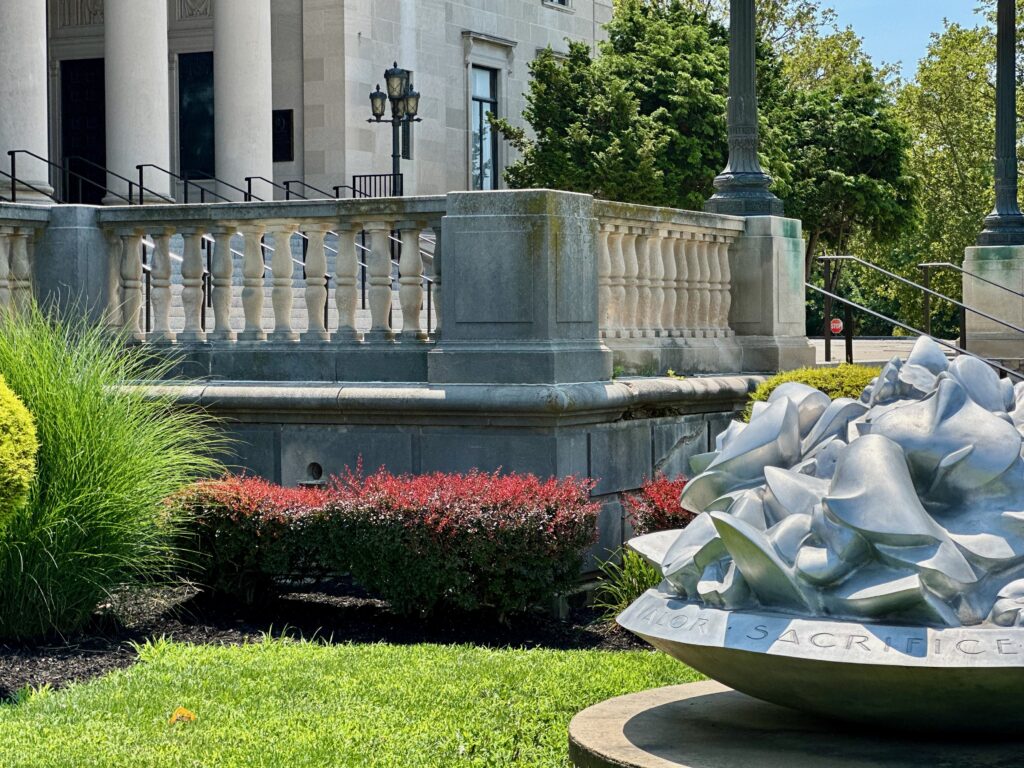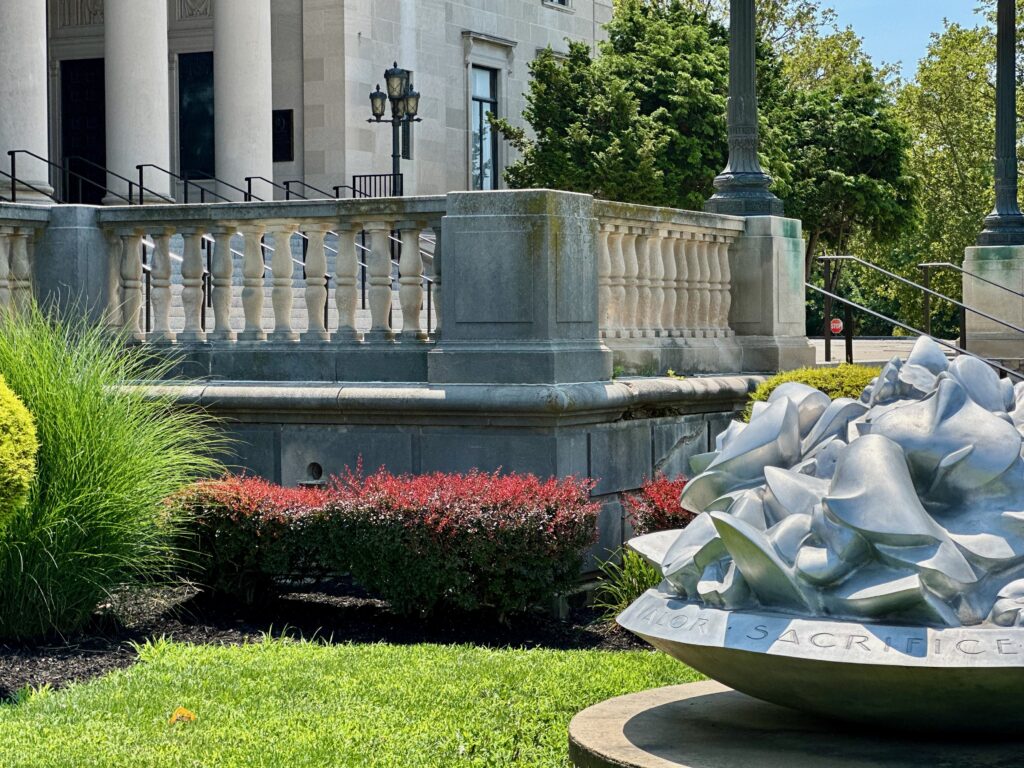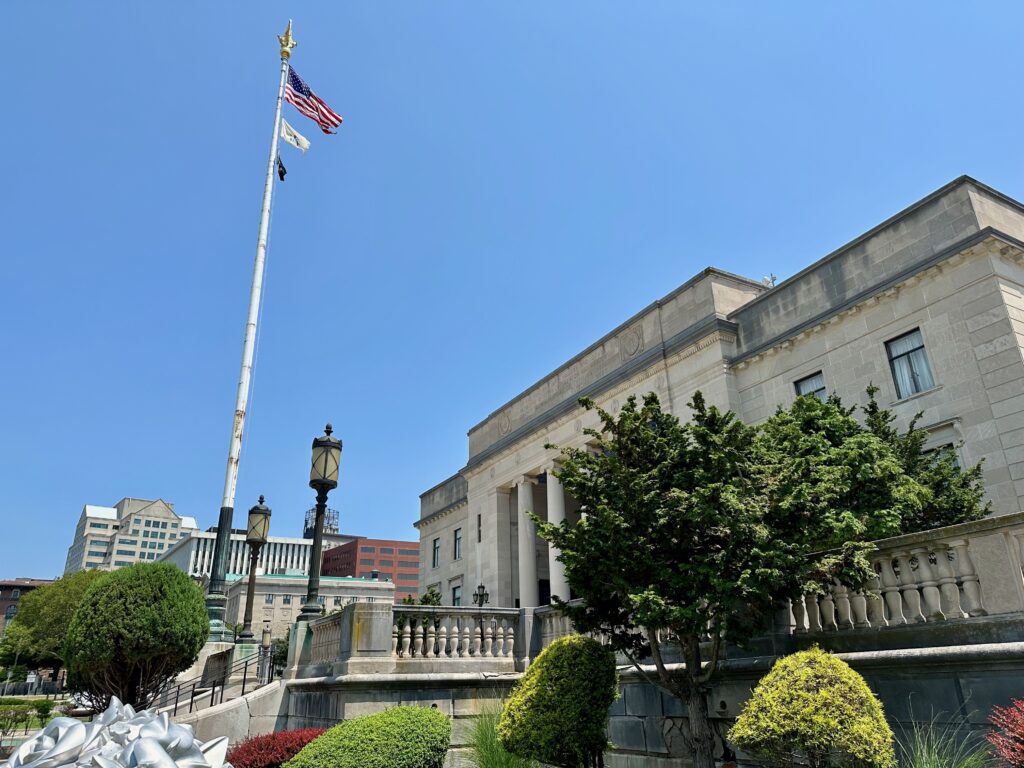This Week in History: The History the Trenton War Memorial

If you’ve ever been lucky enough to see a performance or event at the Trenton War Memorial, you were no doubt enchanted by its beauty. From the regal exterior to the intricate details interwoven throughout every corner, one can’t help but be wowed by this iconic spot. A rich history of honor, innovation, and community is held behind its walls, making this space one of Trenton’s most sought-after venues almost a century after its inception. Today, look inside the War Memorial and the lives of the men who brought it to life.
Located blocks from the Statehouse, Old Barracks, and other iconic fixtures in Trenton, there’s no doubt that the War Memorial is right at the center of the action. The space’s original purpose was a “great community center” dedicated to the brave soldiers and sailors from Mercer County who served during World War I. Per the goals and ambitions of the founding War Memorial Committee, the space was designed to offer “beauty, dignity, and civic utility.” Due to its rich history and profound importance to the Trenton community, the building has since been distinguished on the National Register of Historic Places. The National Register of Historic Places is a federal list of facilities, districts, objects, etc. that hold significant historical value or otherwise offer “great artistic value.”
The War Memorial was truly a labor of love in every sense. Funds for this project were raised through several resources, including residents of Trenton, the municipality, and county sources. In total, $922,000 was raised for the construction of this space. The property was designed by Louis S. Kaplan, an aspiring young architect who won the memorial competition. Kaplan was a Philadelphia native who received his Certificate of Proficiency in Architecture at the University of Pennsylvania in 1917.
Even before being selected to design the War Memorial, Kaplan laid his roots in the Capital City. Upon graduation from the University of Pennsylvania, Kaplan was employed by Trenton architects Kelmann & Fowler. Kaplan served as the chief draftsman for William A. Kelmann and did so through 1924. Kaplan also served as an instructor for the New Jersey School of Industrial Arts in Trenton. In 1924, Kaplan opened up his architectural practice, and just a few short years later, his vision for the War Memorial was brought to life.
After completing the War Memorial, Kaplan stuck around and supervised the War Memorial. He would also become the lead architect throughout the City of Trenton. Although magnificent, over the years, the War Memorial encountered wear and tear, leading to its eventual deterioration. However, this wasn’t the end of the road for the War Memorial. In the 1990s, the State of New Jersey stepped in to restore the property, and the renovations were completed in 1999. Today’s venue is now a concert hall and meeting space, offering a 1,807-seat theater hosting several iconic acts over the years.
The War Memorial remains a central component of connection and creativity in the Capital City through its ebbs and flows. Furthermore, this building is a constant reminder of the sacrifice and bravery of the World War I service members for whom this building was consecrated. If you find yourself passing by this iconic spot, perhaps take a moment to remember this building’s history and the sacrifices made so that we can better appreciate and enjoy this space today.
The post This Week in History: The History the Trenton War Memorial first appeared on TrentonDaily.
Powered by WPeMatico



